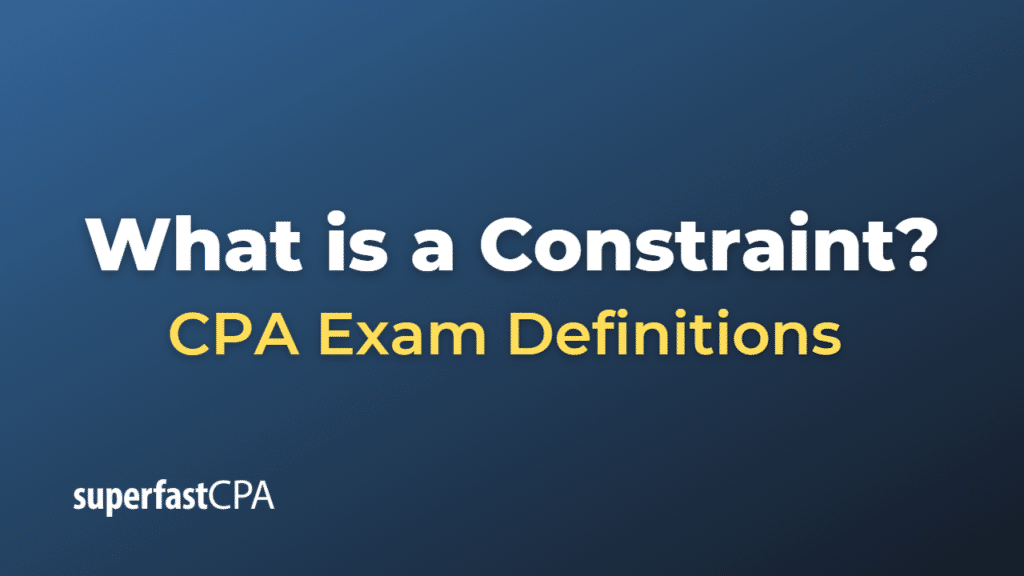Constraint
In a general context, a constraint is a limitation or restriction that affects the range of possible options or actions available in a given situation. Constraints can arise from various sources, such as physical, financial, legal, regulatory, or technical factors, and they may influence decision-making processes, resource allocation, or the achievement of goals and objectives.
In different fields, the term “constraint” can have more specific meanings:
- In project management, constraints refer to limitations or restrictions that impact the project’s scope, time, cost, quality, or resources. Common project constraints include budget limitations, deadlines, resource availability, technical requirements, and regulatory compliance.
- In operations management and economics, constraints refer to limitations on the production or distribution of goods and services. These constraints may include limited production capacity, scarce resources, supply chain bottlenecks, or market demand.
- In mathematics and optimization, constraints are conditions or restrictions that must be satisfied for a solution to be considered valid. For example, in linear programming, constraints are linear inequalities that define the feasible region of the problem.
- In computer programming, constraints are conditions or rules that must be satisfied by a data structure or algorithm. These can include data type constraints, data range constraints, or relational constraints between data elements.
- In physics, constraints refer to restrictions or conditions that must be satisfied by a system or process. For example, in classical mechanics, constraints may restrict the motion of particles or the conservation of energy, momentum, or angular momentum.
In summary, a constraint is a limitation or restriction that affects the range of possible options or actions in a given context. Constraints can arise from various sources and have different implications depending on the field or situation in which they are applied.
Example of a Constraint
Let’s consider an example from the field of project management to illustrate the concept of a constraint:
Imagine you are a project manager for a software development company, and your company has just secured a contract to develop a custom software application for a client. The client has provided a set of requirements for the project, as well as a fixed budget and a deadline for delivery. In this scenario, you will face several constraints as you plan and execute the project:
- Scope constraint: The client’s requirements define the scope of the project. You must ensure that the developed software meets these requirements, which may include specific features, functionalities, or performance criteria. The scope constraint limits the range of possible solutions for the project and affects the allocation of resources and efforts to different project tasks.
- Time constraint: The client has set a deadline for the project, which creates a time constraint. This deadline limits the amount of time available to complete the project, which may affect the project’s scheduling, resource allocation, and risk management. You will need to ensure that the project is completed within the given time frame to meet the client’s expectations and avoid potential penalties or damage to your company’s reputation.
- Cost constraint: The client has provided a fixed budget for the project, which represents a cost constraint. This budget limits the financial resources available for the project, which may affect decisions related to staffing, equipment, and the use of third-party services. You will need to manage the project’s costs carefully to ensure that it is completed within the allocated budget, while still meeting the client’s requirements and quality expectations.
- Quality constraint: The client expects the software to be of high quality and free of defects. This quality constraint may affect decisions related to testing, quality assurance, and the allocation of resources to different project tasks. You will need to ensure that the project meets the client’s quality expectations and adheres to industry best practices and standards.
In this example, the project’s scope, time, cost, and quality constraints interact with each other and influence the project manager’s decisions, resource allocation, and project execution. By managing these constraints effectively, the project manager can increase the likelihood of delivering a successful project that meets the client’s expectations and requirements.













